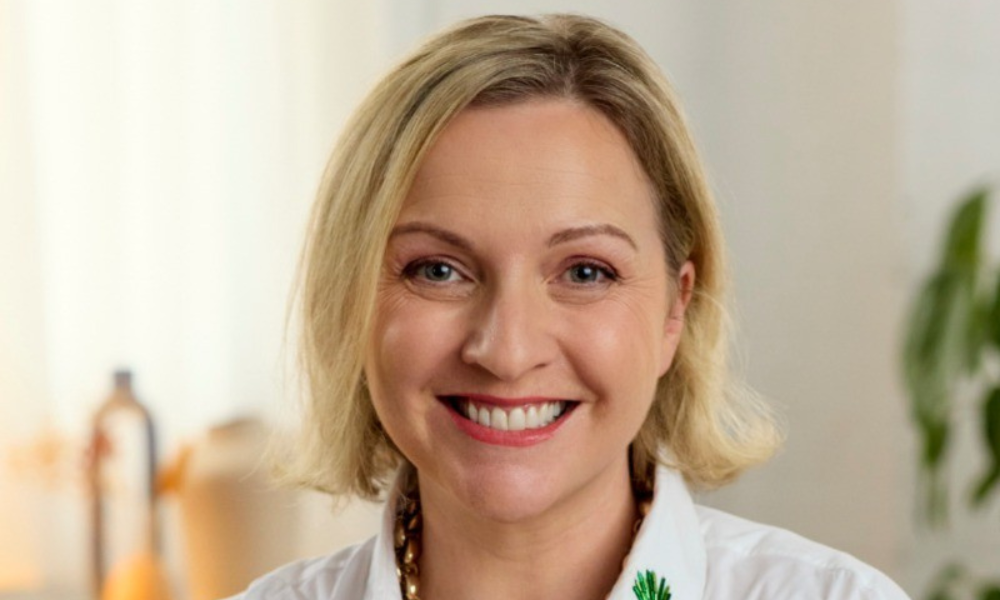
Having received over 300,000 job applications in 12 months, Amy Schultz discuss hiring challenges, skills development – and her road to HR

Work has been busy: Four years into the job and Amy Schultz, Canva global head of talent acquisition, has seen the workforce grow by a multiple of five.
The 5,000 “Canvanauts” employed by the graphic design technology company toil away in offices and homes from the US, UK and Europe to China, the Philippines and, of course, Australia, where 60% of the crew are based.
Schultz has done some globetrotting of her own, working for LinkedIn in San Francisco and Singapore and for Hudson in Shanghai, Melbourne and Sydney, but she takes a video call from HRD in Albury, on the border of New South Wales and Victoria.
“The growth has been amazing,” she says. “I’m always amazed by the different types of people that use Canva, and I think everyone who works at the company contributes to that in some shape or form.”
The staff are a real mixed bag, with workers in engineering, product design, product management, HR, legal, finance, sales and customer success.
“We hire a gamut of roles,” she says. “Close to 50% of our employees are software engineers, and we have a large amount of folks in our design specialty, which is made up of creative designers, graphic designers, product designers, product managers, technical program managers – there is a real variety of roles.”
Talent acquisition at Canva
Having such a big profile can be a blessing and a curse when it comes to recruiting.
“We’ve received over 300,000 job applications in the past 12 months, which is incredible,” Schultz says.
In Australia, the firm has signed up to the Circle Back initiative, a pledge to let every applicant know whether they’ve made it onto the shortlist or not.
Canva hasn’t moved to using AI in assessing candidates. Instead, it uses BrightHire, a structured interviewing tool that leverages AI to create candidate summaries and notes.
“I think every recruiting system out there at the moment is looking at how AI can be used to automate a lot of top-of-funnel activity to ultimately help recruiters be more efficient so they can focus on the humanness in the process, which I think is exciting,” she says.
Part of the attraction may be that Canva is a hybrid-first company, she says.
“We’re excited by the continued opportunities that remote work gives us around ability, but we really believe it’s important to build meaningful connections – particularly when you’re building products,” she says. “Having a group of designers in a room solving a problem can be super effective.”
Skills development and AI
To underline the culture of learning at Canva, managers are known as “coaches”. The job is to equip those coaches with the skills and knowledge to stretch their teams.
“Skills are changing on the daily, so we always need to have an eye on skill development,” she says. “That talent pool is small, so you need to be creative in thinking about how you are not only buying that talent but building it, too.”
The talent acquisition team also includes workforce planning, internal mobility, talent programs and recruiting operations. Canva’s L&D team has organised an internal AI school, and the company is building relationships with universities.
AI has put the cat among the pigeons, but in a good way, she says. Where AI is a lever than can prise open efficiencies in operations it can also create complementary opportunities to focus on the human aspect.
“Skills like empathy, ethics, communication, collaboration, problem solving and critical thinking are more important than ever,” Schultz says.
The road to a career in HR
When it comes to her own skills, Schultz says she followed a path of friends who had found work after university at applicant-tracking software start-up PageUp. She recalls about 17 people working in an office, a converted apartment, in a laneway in Melbourne.
“My desk was in the kitchen outside the one and only toilet,” she says. “They were some formative years.”
Providing customer support to recruiters, Schultz admits now that she didn’t really appreciate the challenges the people on the other end of the phone were grappling with.
“If I went back, I would do the job a lot better,” she confesses. “But that’s how I got into recruiting.”
Work at a specialised agency recruitment company followed, before a shift into recruitment at Spotless.
“It was a huge eye-opener,” she says. “At that time, Spotless was almost 40,000 employees – I was recruiting blue-collar workers right up to CFOs.”
Workforce planning at Canva
A move to Hudson in 2012 sparked a long spell of relocations, from Melbourne to Sydney, then Sydney to Shanghai.
“That move to China was a game-changer, both as a person and as a professional,” Schultz says. “China was never on my bingo card, but I’m so pleased I made the leap and did that.”
LinkedIn beckoned in 2015, with roles in Singapore and San Francisco: “It was fantastic, I loved it,” she says.
And when the pandemic skewered everything, Schultz realised she was a long way from home.
“The value proposition of living and working overseas and sitting in my apartment on my own every day, unsure about when I was going to see my family in Australia again, just changed things for me,” she tells HRD.
Then, one day an email arrived: Canva was looking for a global recruiting leader, “and global roles in Australia do not grow on trees”.
“The more I learned about Canva, the more excited I got,” she says. “I moved back to Australia at the beginning of 2021, and it’s been a wild, crazy, impactful four years ever since.”